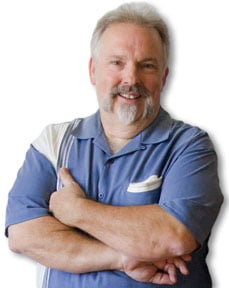A Firestorm of P.R.

Jim Chase is an award- winning advertising copywriter
and native of Southern California. Readers are invited to “friend” his My Thoughts Exactly page on
Facebook. Also visit Jim’s new blog with past columns and
additional thoughts at:
http://jchasemythoughsexactly.blogspot.com
Being a lifetime Southern California resident, I’ve always been extremely appreciative and regularly in awe of the dangerous work done by our many thousands of wildfire fighters when faced with blast furnace temperatures, hellacious Santa Ana winds and thousands of acres of tinder-dry brush that cover our Southland.
Fighting out-of-control fires during hell-on-earth conditions is just business-as-usual for firefighters in this part of the world. The equipment and methods may change, but the size and regularity of the conflagrations remain as deadly and destructive as ever. It’s not for nothing that Southern California’s four seasons are said to be drought, flood, wind and fire.
That said, what does seem to be different lately is how the bureaucracies involved in these all-too-frequent crises handle the media during the events themselves. Take the recent Powerhouse Fire in the Saugus-Santa Clarita Mountains just north of us.
Over the years, we’ve gotten used to watching televised press briefings that feature an exhausted and sweaty, soot-covered fire captain in his yellow turnout coat describing the current status of the fire lines, approximate percentages of containment and other pertinent and important facts. Reporters would ask a battery of inane questions and the longsuffering firefighter would answer as best he or she could when you just know they’d love to whack the journalist upside the head with the largest brass hose nozzle available and get back to fighting the blaze.
The past several fires, however, I’ve noticed a significant change in the way these press briefings are handled. Instead of an exhausted firefighter addressing the cameras with cut-to-the-chase statistics, we now get an extended parade of dry cleaner-fresh politicians and PR hacks each jockeying for their moment of glory in front of the phalanx of lights, cameras and microphones.
Two weeks ago, for example, during the height of the Powerhouse Fire in Santa Clarita, I watched a press conference which had been repeatedly promoted ad nauseam as bringing us the “latest shocking developments” on the explosive growth of the fire and “what it means for residents in the Antelope Valley and neighboring communities.” Our daughter and her family live in one of those communities, so of course I watched. And watched. And watched some more.
For five minutes, then 10 and on past the 20 minute mark into the press conference, there was a lineup of officials from Cal Fire, the L.A. County Fire Dept., the California Emergency Management Agency, California Fire Service and Rescue Emergency Mutual Aid Plan, the City of Los Angeles, the U.S. Forest Service, L.A. County Sheriff’s Dept., Angeles National Forest Joint Command task force, the Bureau of Land Management, National Wildfire Coordinating Group, and Cal Trans.
There were incident commanders, press liaisons, assistant deputies, chief public information officers, city councilmen, mayors, a state assemblyman and even a senator.
Shockingly, the only dignitary who didn’t elbow his way in front of the media mass at this particular press conference was outgoing Los Angeles mayor, Antonio Villaraigosa, a man whom my friends in media regularly joke about, saying the quickest way to get hurt is to stand between Hizzoner and a TV camera with its red light on. (And yes, he’s been a regular fixture at past fire-related press conferences decked out in his own regal mayorific yellow turnout coat.)
For nearly half an hour, the only “news and information” this parade of spokesclowns imparted was to echo each other virtually word-for-word in congratulating their respective departments for a “spirit of cooperation” and “solid commitment to teamwork” and “task completion,” and to reassure the public that piles of county, state and federal dollars had been promised by other babbling bureaucrats and blah-de-blah, blah, blah.
As I watched the press event drag on, I couldn’t help but think that the brave and determined firefighters on the front lines would have a much easier time knocking back the flames if there wasn’t such a windstorm of hot air blowing their way.
I’ll see you ‘round town.
